This is part 2 of the “DIY Customer Focus Series”. You can read Part 1 here…
Modern business is more competitive than ever, so knowing your target audience is not just beneficial—it’s essential. Deep knowledge of your target audience can help you to avoid costly missteps and wasted resources, keep your brand focused on driving value the way you intended, and can most of all, contribute to a better return on Ad spend.
Getting to know your audience (read client base) should be viewed as a cycle, constantly evolving as your customer base and strategic directions change. In this article, we will recap our previous discussions on target audiences and explore how ongoing audience analysis plays a crucial role in tailoring your marketing strategy.
Who IS your IDEAL CUSTOMER? Modeling Your Targets
Creating sales & marketing profiles is foundational to connecting effectively with your audience. This modeling starts with:
- Asking yourself: Who is (will be) buying my product(s) & service(s)? and trying to describe them as best you can.
- Gathering data about potential and existing customers, focusing on their behavior patterns, motivations, and preferences.
- Building a list of your possible client motivations, the kinds of buyers you have, what their questions and expectations would be in your product/service.
- From this list, building fictitious client/avatar using this data to have a quick reference reminder of what your target clients are like, and what they’re after. Marketers know this sheet as the Ideal Customer Profiles. These rich, detailed reference documents – usually 1 per market segment, 1 to 2 pages long – allow you and your marketers to craft targeted messaging aimed at different buyers/segments of your market.
Demographic information cannot be overstated. These details like the economic, social, and cultural characteristics of your ideal customers will help your team identify distinct groups within your audience. By becoming familiar with this data, you can identify key segments that are most likely to respond to your marketing efforts.
Developing these Ideal Customer Profiles is something that may start as a bullet point list in a text file and gets refined in time after a few versions. As you roll out initial marketing efforts and gather more data, these personas should evolve. Regularly updating your personas (twice a year or so) ensures they remain relevant and effective in aligning your marketing strategies with the real needs and wants of your audience.
By understanding what your customers aspire to achieve or how they want to be seen, you can align your messaging and branding to resonate more deeply.
Tailoring Your Marketing, Content, and Market Strategies
Now that you have your client profiles in hand, these can be considered your messaging NORTH STAR. It guides your way of messaging. You can tailor your strategies to the aspirations and lifestyle preferences of your ideal audience to see how this performs. This cycle of messaging experimentation and profile realignment is crucial for crafting campaigns that do not just catch the eye but also strike a chord with the audience’s deeper desires and needs.
Effective marketing messaging is about emotional engagement and communicating your value. Using storytelling in your messaging that can reflect your audience’s aspirations or that addresses their pain points in a relatable way can significantly enhance the impact of your campaigns and content.
In order to be effective at marketing to a target market, you have to know what your clients want and what they need—and how you can deliver those things in a way that satisfies them. This is where understanding the motivations behind your audience’s actions comes into play: why they’re buying products or services, making purchases online or in stores, using social media platforms like Facebook or Instagram (or both).
Tips on successfully targeting your message:
- Keep your message clear: Try to focus on 1 aspect of your client’s interest, situation, etc… at a time.
- How you write affects your audience’s perception:
- Writing in a way that expresses understanding of your client’s problems and their reality is key to writing more impactful messages
- Keep your tone aligned with your audience: This is best illustrated by an example – Would you write formally to target young adults? Probably not. Would you write in a casual and familiar tone when you are trying to convey your professionalism as a lawyer to 55-year-olds? Probably not.
- Choose the right Channels: Reach your audience where they are most active – for the purpose that best aligns with your offerings. E.g.: You wouldn’t produce vacation-related content on LinkedIn when that platform’s purpose is aimed at professional connections. You can also play across formats like social media, email, and offline marketing to broaden your reach and impact of your messaging.
- Monitor Your Work: Regularly analyze your marketing effort’s effectiveness – though sometimes those timelines do take some time to make an effect.
- Stay Nimble: Be ready to adjust your marketing moving forward based on performance data and changing market conditions. This helps in maintaining your relevance and stay efficient in your targeting efforts.
Advanced marketing measurement techniques, such as A/B testing and personalized marketing, help refine your approach based on actual audience responses, ensuring that your marketing efforts are as effective as possible. By continually adjusting your strategies based on feedback and data, you can ensure that your marketing efforts remain relevant and compelling.
Understanding Your Real Customers and Using Data!
The cycle of audience understanding completes with feedback mechanisms. When it comes to feedback and data, it’s easy to get lost. Start simple whenever you can.
Surveys, public comments, and direct feedback tools are invaluable for gauging customer satisfaction and understanding how well your messaging, products, or services meet their expectations. This direct input from customers provides actionable insights that can help tweak your marketing strategies even further.
Integrating this feedback into your marketing strategy is crucial for your success.
By analyzing the data collected from various analytics tools, you can make informed decisions. A quote to keep in mind when customer feedback is involved goes like this:” Customers are often quite good at pointing out problems. They are not good at explaining what they truly want as solutions.”
Your ongoing journey of learning and adapting will help keep your marketing work & strategies fresh and your marketing efforts aligned with your audience’s current needs.
Flashier, more sophisticated data solutions can be scary but remember to start simply. Tools for detailed audience analysis, such as data analytics platforms, CRM systems, and AI-driven insights, can provide a clearer picture of how your audience interacts with your content and products, but carry a harder learning curve.
Come back later, because we will publish some issues on deep diving on data use, so stick around!
Conclusion
Remember that the process of understanding and engaging your target audience is never static. It demands continuous adaptation and learning. By staying committed to this cycle of analysis, (re)modeling, and engagement, you ensure that your marketing efforts remain fresh and relevant, keeping you connected with your customers and ahead of the competition.

